

| | | | | | | | | | |
News and Views
☰
News of breaking thoughts and random enthusiasms.
For the Birds

Sex, War, Kidnapping, Bootleggers...A Herriman Family History
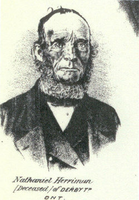
I started searching and found out we got here in 1639, 20 years after the Pilgrims landed. And a lot of interesting things have happened in the family since then. Click the link to read the fascinating history of the Herrimans in America.
A Musical Trip to Cuba-2018

Non-hispanic migrants share US border problems
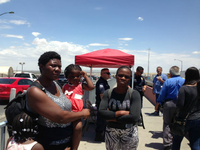
Karamoja, Uganda, March 2014
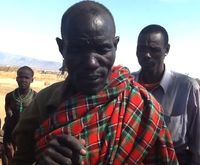
Fighting Foreclosure
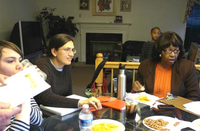
More pictures Here.
Basketball in Raleigh NC on M.L. King day
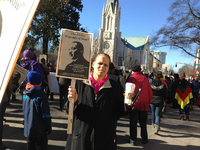
We built a childrens art center in Uganda
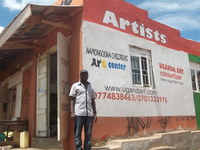
Bach in the living room
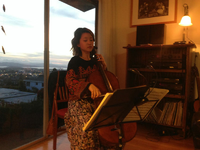
New Movie Targets Child Labor in Uganda
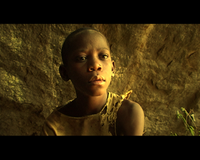
The actors are paid, but the film crew is not. In fact the technical staff all contribute from their own pockets to finance the production of their movies. Stone Cold is the third Tri Vision film.
Paulo wanders Kampala's streets making music
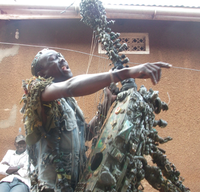
He’s one of the most remarkable characters I’ve met in my visits to Uganda, an itinerant street musician who wanders the roads and byroads of this sprawling city playing his songs on street corners, in market places, and anyplace he can gather a crowd.
He’s bizarrely dressed…in a style something like a forest satyr with boots that look like they were sculpted out of moss, and tattered jeans and shirts. He wears sunglasses with only one lens and a beaded headband. He carries a vicious looking homemade slingshot in his shirt, that he takes out to ward off thieves and ruffians who sometimes plague him. Wandering the streets makes Paulo an easy target for petty robbers who would attack him even for the small change he has collected on a day of wandering and busking.
Paulo writes his own songs, that fit perfectly his husky voice and his rap style of delivery…he’s like a pure version of hip hop. He writes about sex, politics and God with equal intensity and frequency. He also makes his own instruments…called adungus. The adungu is an 11 string harp, a traditional Ugandan instrument that is habitually played in Ugandan ceremonies and dance performances. But Paulo has re-conceived the instrument…his current adungu is over 7 feet long and weighs about 65 lbs. Its so big he can’t fit it into a taxi cab, but can occaisionaly be seen riding on the back of a boda boda carrying the enormous harp, creating the impression of an otherworldly vehicle careening down the crowded street.
Traditional adungus are made of plain wood and animal skin stretched over a hollow body. Very little decoration or style is involved. They’ve been made the same way for centuries. But Paulo’s adungus are elaborate almost phantasmagoric creations of color, melted plastic, lots of jingling metal junk, straps, suitcase handles, interesting street trash, model soldiers and guns, bottle caps. But they still have the basic 11 strings with friction tuning pegs, and a stretched animal skin under all that decoration and personalization that Paulo has added.
Paulo hasn’t adapted well to modern civilization. He’s illiterate. Doesn’t speak English, an official language of Uganda, and a standard requirement for commerce, government, education. He lives day to day, and has never held a salaried job. He couch surfs with friends and relatives, and has never had a permanent place to call home since he left his village 20 years ago. His life style would easily fit into the pre-colonial patterns of life..the wandering musician or troubadour, moving from village to village…singing for his supper . He’s never driven a car or received an email. He can use a cell phone, but has never had a phone number. He’s enormously inventive and creative, but has never found a wide audience, because his medium is personal and intimate. No tv screen, or even radio speaker separates Paulo the person from his audience, and consequently his audience is too small to support him very well. He’s totally charming and engaging, full of jokes and good humor, and at the slightest urging he’ll burst unto song.
As I said, he’d love to make a cd. Also he dreams of having a place of his own where he can have a workshop to make adungus and other musical instruments to sell.
If I could figure out a way to help him, I would. But for now, I'm just enjoying the music.
Nomad still roams, but stays close to home
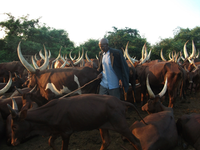
Lawrence Kayinamura and his family only moved into a real house in 1995. Before that, they were nomads, herding cattle through the broad plains of Ankole, living on the milk, blood and meat of their herds, erecting small huts of sticks and thatch for shelter, independent and self sufficient, even prosperous. It was the wealth of his cattle that let Lawrence make the switch from nomad to homeowner. He traded part of his herd for a piece of land in Rakai district, just outside his Ankole homeland, then settled into a different routine, taking his cows out every day to his 60 acres of grass and bush, with a bore hole well for watering, and some stables and enclosures to keep the herd safe at night.
I was there one day as dawn broke on the sleeping herd. Geoffrey, the herd boy, scooted around from cow to cow, taking the morning’s milk, which nourishes the humans in this family, as well as the calves. Lawrence walked among the drowsy cattle looking for any signs of disease or discomfort. He had lost 12 cows recently to malaria, and didn’t want to lose any more. The heat of the sun here, just a few degrees south of the Equator, was hard on the cattle too. In half an hour most of the herd was on their feet, anticipating the morning foray into the wild pasture outside the enclosure. The huge placid beasts were pretty quiet, with only occasional lowing. When they moved together, their huge horns clattered softly against each others, like soft, off-beat maracas.
It was the morning routine.
I was visiting Lawrence's farm near Mutukula on the Tanzanian border with my friends Mathias and Jovia Tusiime. Lawrence is Jovia's dad, and she was raised in the Ankole cattle culture with her 15 brothers and sisters.
The Ankole used to bleed their animals and drink the blood, or cook it into a solid cake, (tastes something like liver, Mathias said). But with the increased use of vaccines and antibiotics, it’s no longer safe for people to ingest cows blood. Milk and meat are still ok, though. Lawrence and Edisa raised 15 children while they tended the cattle, though not all of them survived childhood, and two of the boys did not survive adulthood. Some of the boys went to school. But Jovia, Mathias’ wife, left school after primary 3, because at the time, her family lived pretty far outside the cash economy, they couldn’t afford school fees, and they never stayed in one place long enough.
Now, Lawrence is 73, and I think he’s glad he doesn’t have to wander endlessly with his cows. But he built a little hut across the highway from his house, and he stays there with the cattle when he has to move the herd to the pastures across the road.
The house is modern, with standard Ugandan architecture; metal roof, walls built from bricks made on site. But it still doesn’t have electricity, despite high tension power lines passing 100 feet away. There’s no running water either. When I asked for a glass of water, I was offered milk. The milk is delicious. Thick and creamy, usually served hot.
More photos from my visit to Lawrence and his family in my facebook album.
Occupation Art
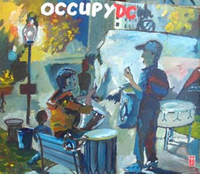
I found some lively art work down at the occupy DC encampment in McPherson Square. DC artist Ray Voide did a nice job of capturing the spirit of the encampment in his acrylic-on-cardboard paintings. The Rosa Parks banner was especially striking.
No arrests or pepper spray at DC Nov. 17 Bridge March
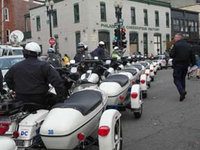
Categories
Recent Posts
- For the Birds
- Sex, War, Kidnapping, Bootleggers...A Herriman Family History
- A Musical Trip to Cuba-2018
- Non-hispanic migrants share US border problems
- Karamoja, Uganda, March 2014
- Fighting Foreclosure
- Basketball in Raleigh NC on M.L. King day
- We built a childrens art center in Uganda
- Bach in the living room
- New Movie Targets Child Labor in Uganda
- Paulo wanders Kampala's streets making music
- Nomad still roams, but stays close to home
- Occupation Art
- No arrests or pepper spray at DC Nov. 17 Bridge March
© 2025 Tom Herriman